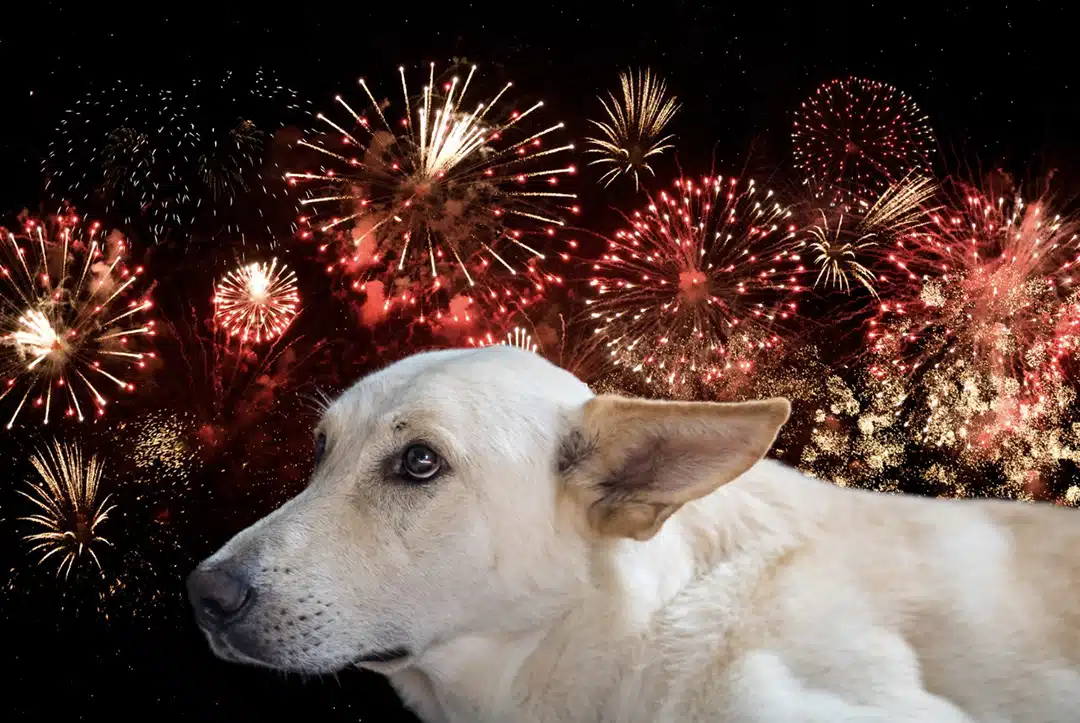When performing your weekly at home pet exam, you want to take a systematic approach and do it the same way every time so you don’t miss anything and make sure you have good lighting.
Face
Both pupils should be the same size and the eyes should be clear, bright, and shiny. You should not see redness, discharge, or be squinting, as these can all be signs of infection, foreign objects in the eye, or pain.
Dogs and cats have what’s called a “third eyelid” which helps protect the eye as well as lubricate it by producing tears. The third eyelid should not be showing. When a cat or dog is sick or in pain, you will suddenly see this white-colored membrane covering the lower part of the eye.
Check to see if there is an increase or a decrease in tear production by noticing how moist your pet’s eyes look and how often they tear up. Certain breeds of dogs such as the cocker spaniel, shih tzu, Lhasa apso, Pekinese, miniature Schnauzer, and bulldog are predisposed to developing a very common condition known as dry eye, where tear production is greatly reduced, leading to red, itchy, and painful eyes.
Nose
It’s a common fallacy that a warm nose means a dog or cat has a fever. Humidity, body temperature, and flow of tears through the ducts into the nose all help determine whether your pet’s nose is dry, moist, warm, or cold. However, the nose should be smooth and without any scaling or roughness. Sneezing or nasal discharge can be signs of an upper respiratory infection, quite common in cats. Also, look for color changes on your pet’s nose. There should be no loss of pigmentation on a dark nose. White noses can get sunburn and even skin cancer.
Ears
Look at your pet’s ears. They should have very little odor or discharge, but a small amount of wax is normal. If you see debris, redness, hair loss, or crusting, or your pet seems to be in pain when its ears are touched, it could be a sign of an ear infection. Look for abnormalities on the outside of the ears, a happy home for some parasites. Hair loss, crusting, and redness can indicate mites, allergies, or infection. Ears should be flat, not swollen. Flies will sometimes bite at the tips of dogs’ ears, so carefully check along the edges. Cats and dogs will paw at their ears or shake their heads when their ears are bothering them.
Mouth
Notice if your pet has any trouble opening and closing its mouth. Look for any drooling or difficulty chewing and swallowing. Check your dog or cat’s mouth for tumors, swelling, bleeding gums, tartar, and foreign objects like string (cats) and sticks (dogs). Look at the teeth. Are they white, brown, or green? There should be no broken teeth and no odor.
Look at the color of the gums. They should be nice and pink, not white or red. You can check your pet’s circulation by using your thumb and briefly applying pressure to the gums and releasing. The area that you pressed should turn white and then rapidly return to the normal pink color. This is called the capillary refill time. For dogs and cats, one to two seconds is considered normal. If the refill time is less than one second or more than three seconds, it could indicate a serious circulation problem and necessitates an immediate trip to the vet.
Before moving to the skin, feel under your pet’s throat. Dogs and cats have lymph nodes in their bodies, just like humans do. Feeling for lumps, like the doctor does to you, can help detect enlarged lymph nodes, which can be the first sign of cancer or infection in dogs and cats. Dogs that get lymphoma, a common type of cancer, will have enlarged lymph nodes that are easily felt. Other lymph nodes that are readily detectable when enlarged are located at the shoulder, under the forearm, and on the backs of the rear legs.
Skin and Coat
Look closely at your pet’s skin by parting the hair in several spots or blowing gently. Look and feel for areas of swelling, heat, scrapes, pain, hair loss, crusting, or redness. Now run your hands all over your pet’s body, including all four legs, and lift up the tail. Check for lumps, bumps, and growths of any sort. Look closely under the fur because small bumps can be hard to see. The most common sites for tumors to grow are on the skin, mouth, mammary glands, and lymph nodes. Check under the coat for flakes, ticks, fleas, and flea dirt—small flecks of black debris that look like black pepper. This is actually flea poop, and if you get it wet, it will turn red.
Your cat or dog’s coat should be sleek and glossy, not dull, dry, or greasy. Run your fingers through your pet’s hair. There should be no buildup or odor on your hands. Also, check between the toes and look at the pads. Dogs and cats can get burrs, gum, and other foreign objects lodged there. During the summer months, dogs can easily burn their pads.
Proper hydration is very important. A good check to see if your pet is drinking enough water and is adequately hydrated is to gently pull up on the skin over your pet’s shoulder blades, then release the skin. If your pet is hydrated, the skin will snap back quickly into position. If your dog or cat is dehydrated, it will take much longer for the skin to release; sometimes, it will even stay tented up. This can be a serious problem and requires a phone call or a trip to your vet right away.
Weight
Last but not least, check for weight gain or loss. This can be crucial in determining early signs of disease or illness. Even just a few extra pounds can be significant in animals, leading to arthritis, heart disease, diabetes, and breathing difficulties. Chances are if you can pinch an inch, your pet is overweight and should see the vet and get started on a weight-loss program.
Again, be aware of what’s normal for your pet, so when changes occur, you can address them immediately by calling or visiting the vet to get the problem checked out and treated before it becomes severe.







